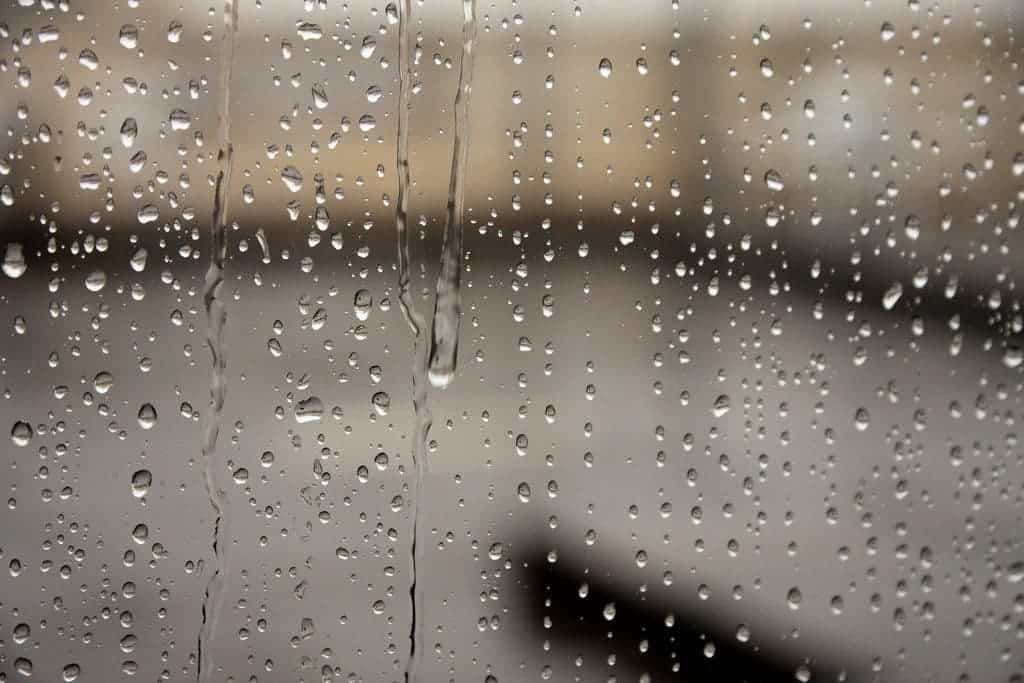In a (much-needed) step towards grime-proof screens, countertops, and other everyday items, University of Michigan researchers have demonstrated a smooth, durable, clean omniphobic coat — a material that will repel any liquid before it can stain.

It’s not omnipotent, but its the kind of ‘omni’ we both want and need. The new material, developed in the lab of Anish Tuteja, U-M associate professor of materials science and engineering, repels liquids before they have the chance to do any damage. The team hopes their research will pave the way to grime-free surfaces, both at home and for industrial uses.
Can’t touch this
The team’s previous research either produced durable coatings that could repel ice or water, or more fragile omniphobic coatings. The new material, however, is the first to combine both this universal repelling property with durability and clearness. And, according to their paper, it should also be easily applied to virtually any surface, from computer displays and camera lenses to walls, floors, or tables.
“I have a 2-year-old at home, so for me, this particular project was about more than just the science,” Tuteja said. “We’re excited about what this could do to make homes and daycares cleaner places, and we’re looking at a variety of possible applications in industry as well.”
Instead of going the traditional route, the “mix-and-see” approach, the team had a different approach: they mapped out the fundamental properties of a vast range of substances, then used computers to predict how any two will interact once combined. This allows them to test a nearly endless range of combinations tailored for very specific properties, and then proceed with lab tests only for the most promising cocktails. Tuteja explains that where once researchers “might have taken a very durable substance and a very repellent substance and mixed them together,” essentially working blind, as “this doesn’t necessarily yield a durable, repellent coating,” computer modeling gave his team the luxury of analyzing materials interaction in depth.
This showed that that the most important properties for their coating, even more important than durability or repellency, was “partial miscibility” — the ability of two substances to blend together just right. Even if two components are not very durable individually, they can form a very sturdy product once mixed, provided they mix in the right way.
Actually producing the final coat, however, was easier said than done, and miscibility posed a significant challenge. The team wanted to come up with a durable, smooth, optically-clear substance that would repel water, oil, and alcohols — so they needed to find a suitable repellent and a strong binder with just the right miscibility that would stick to a wide range of substances.
“You can repel water with a rough surface that creates tiny pockets of air between the water and the surface, but those surfaces don’t always repel oils or alcohols because of their lower surface tension,” Tuteja said. “We needed a very smooth surface that interacts as little as possible with a variety of liquids, and we also needed ingredients that mix together very well, because too much phase separation between ingredients will scatter light.”
The team ultimately settled on a mix of fluorinated polyurethane and a specialized fluid-repellent molecule called F-POSS. The resulting mixture can be sprayed, applied with a brush, dipped, or spin-coated onto a wide variety of surfaces. It’s durable after being applied, although a sharp object can still scratch it. Finally, because of the way the two components mix, it remains optically clear after curing.
“The repellent and binder mix together well enough to make a clear coating, but there’s a very small amount of phase separation between them,” said Mathew Boban, a materials science and engineering graduate researcher and an author on the paper. “That separation allows the F-POSS to sort of float to the surface and create a nice repellent layer.”
By the time this compound is ready for commercial release — which Tuteja believes could happen within the next two years –, it should be quite cheap. Fluorinated polyurethane is common and inexpensive. F-POSS is quite rare and expensive right now, but manufacturers are gearing up for mass production, which will dramatically lower its cost in the near future.
Until such a time, the team is focusing on ensuring that the coating is not toxic so it can be used in places such as daycare centers.
Industry, too, could use new omiphobic coatings. Industries that depend on the condensation of liquids, such as power generation and oil refining, could use this material to enable condensate to more quickly drip off equipment; the team estimates this will raise productivity in such devices by up to 20%. Even NASA stands to benefit.
The paper “Smooth, All-Solid, Low-Hysteresis, Omniphobic Surfaces with Enhanced Mechanical Durability,” has been published in the journal ACS Applied Materials & Interfaces.






